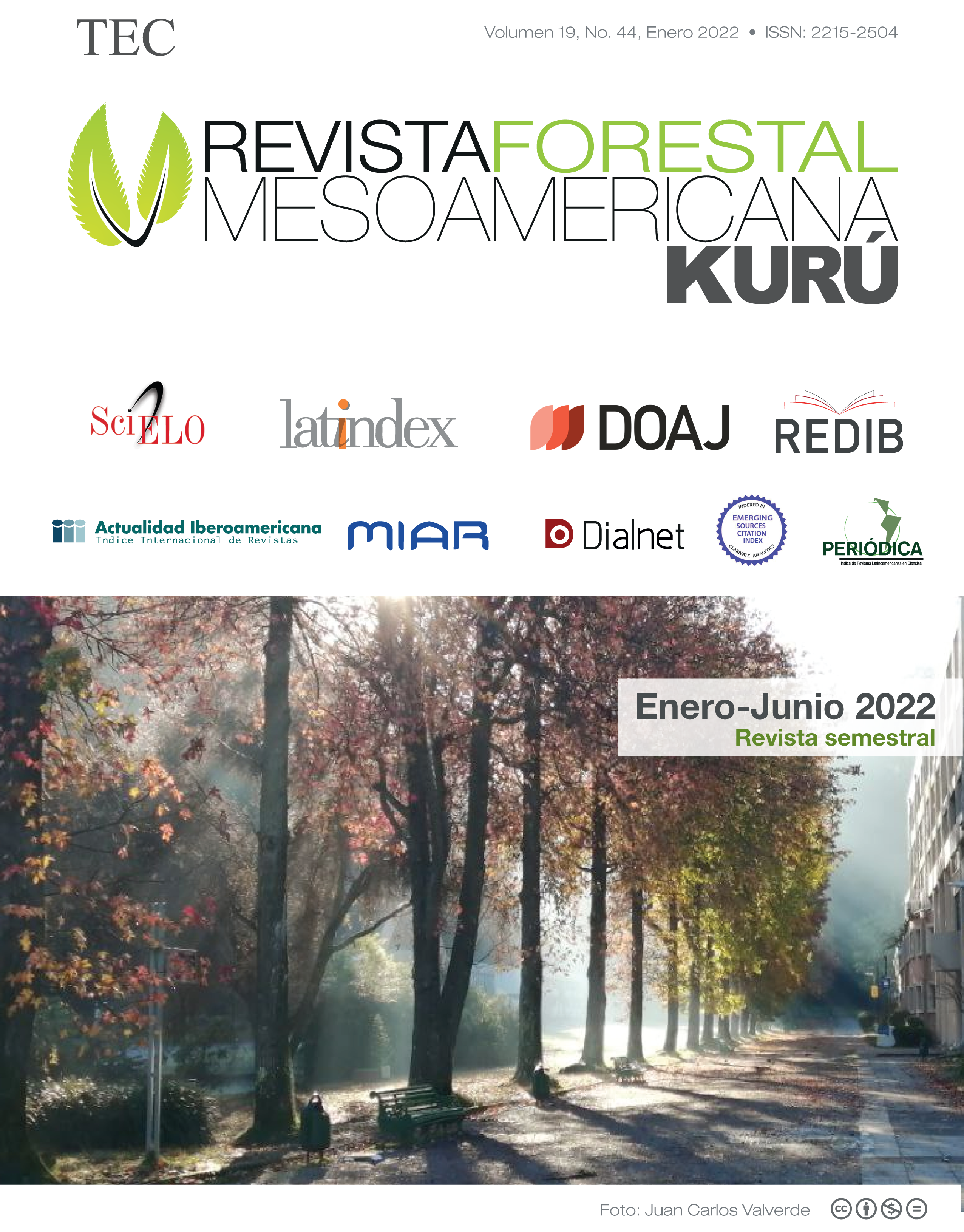Growth of Enterolobium contortisiliquum (Vell.) Morong seedlings under water slides and substrates formulated with composted sewage sludge
Main Article Content
Abstract
With high commercial and environmental value, Enterolobium contortisiliquum (Vell.) Morong is a tree species of the family Leguminosae - Mimosoideae, known as tamboril and used for civil construction, timber products, urban afforestation, and reforestation of degraded areas. In order to analyze the response of the species to the composite sewage sludge (LEC) in relation to the commercial substrate (SC), 5 substrate combinations were used: S1 (100% SC); S2 (75% SC + 25% LEC); S3 (50% LEC + 50% SC); S4 (75% LEC + 25% SC) and S5 (100% LEC), each with 4 replicates. These 5 substrate combinations were submitted to 3 irrigation slides: L1 (36 mm/day), L2 (72 mm/day) e L3 (108 mm/day). Biometric parameters (height, diameter, number of leaves), growth speed, dry biomass, Dickson Quality Index, and height/diameter ratio were measured. Based on the values obtained and on the upper averages for all the parameters evaluated, it is recommended to use S5, composed of 100% LEC with L1.
Article Details

This work is licensed under a Creative Commons Attribution-NonCommercial-NoDerivatives 4.0 International License.
Revista Forestal Mesoamericana Kurú is licensed under CC BY-NC-ND 4.0
Al enviar un artículo a la Revista Forestal Mesoamericana kurú (RFMK), los autores ceden los derechos patrimoniales a la editorial de la RFMK una vez su manuscrito haya sido aprobado para publicación, autorizando a la RFMK a editarlo, reproducirlo, distribuirlo, y publicarlo en formato físico y/o electrónico. La titularidad de los derechos morales sobre los trabajos objeto de esta cesión seguirá perteneciendo a los autores.

